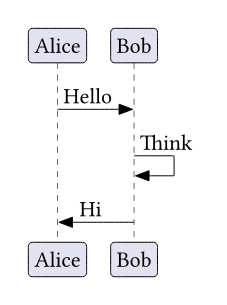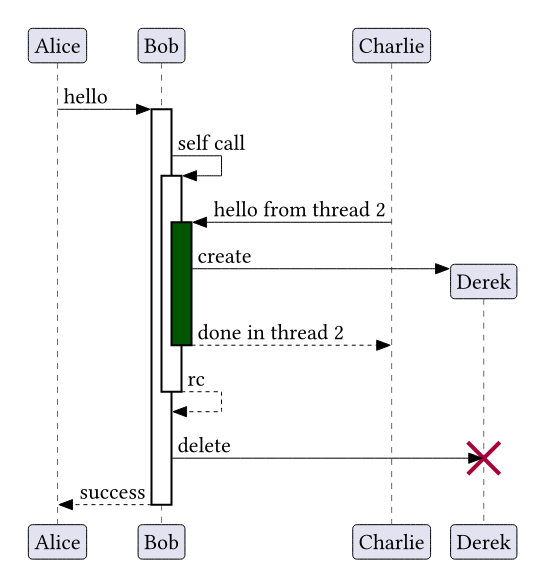chronos
A Typst package to draw sequence diagrams with CeTZ
This package lets you render sequence diagrams directly in Typst. The following boilerplate code creates an empty sequence diagram with two participants:
| Typst | Result |
|
 |
Disclaimer
The package cannot parse PlantUML syntax for the moment, and thus requires the use of element functions, as shown in the examples. A PlantUML parser is in the TODO list, just not the top priority
Basic sequences
You can make basic sequences using the _seq function:
| Typst | Result |
|
 |
You can make lifelines using the following parameters of the _seq function:
enable-dst: enables the destination lifelinecreate-dst: creates the destination lifeline and participantdisable-dst: disables the destination lifelinedestroy-dst: destroys the destination lifeline and participantdisable-src: disables the source lifelinedestroy-src: destroy the source lifeline and participant
Showcase
Several features have already been implemented in Chronos. Don't hesitate to checkout the examples in the gallery folder to see what you can do.
Quick example reference:
| Example | Features |
| Simple cases, color sequences, groups, separators, gaps, self-sequences | |
| Lifelines, found/lost messages, synchronized sequences, slanted sequences | |
| Participant shapes, sequence tips, hidden partipicant ends | |
| Notes (duh), deferred participant creation |
Note
Many examples were taken/adapted from the PlantUML documentation on sequence diagrams
